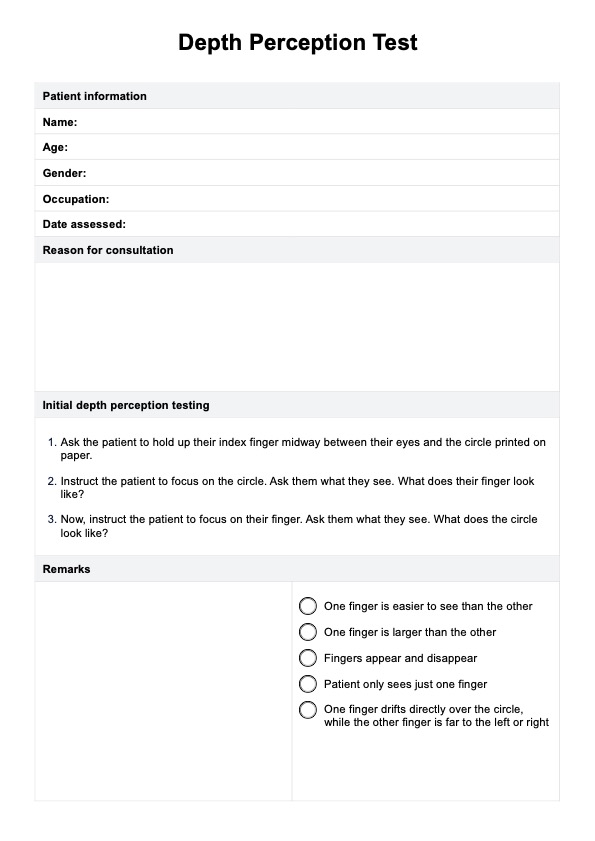Yes, it is possible to lose depth perception. This may be due to amblyopia, strabismus, or vision loss in one eye. Head trauma, neurological disorders, and certain eye surgeries can also affect depth perception. However, treating and restoring depth perception through various methods is possible. These may include the use of glasses, surgery, and vision therapy.

Depth Perception Test
Explore our comprehensive guide to understanding depth perception and the benefits of depth perception testing in diagnostics and improving our quality of life.
Depth Perception Test Template
Commonly asked questions
Testing for depth perception should be a component of a standard comprehensive eye exam, mainly if there are signs of potential depth perception issues. Individuals should undergo depth perception tests during regular eye exams if they are experiencing symptoms such as difficulty with hand-eye coordination and misjudging distances, if they are experiencing an eye condition or injury, and for developmental checks in children.
Eye care professionals, including optometrists, ophthalmologists, and orthoptists, primarily administer depth perception tests. Patients should seek professional help and not rely on online tests for depth perception.
EHR and practice management software
Get started for free
*No credit card required
Free
$0/usd
Unlimited clients
Telehealth
1GB of storage
Client portal text
Automated billing and online payments











